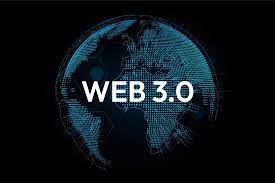Web3 refers to the vision and evolution of the internet that aims to create a more decentralized, open, and user-centric web. It leverages blockchain technology, decentralized applications (dApps), and cryptographic protocols to enable peer-to-peer interactions, data ownership, and trustless systems. Here are some pros and cons of Web3 compared to Web2 and Web1:
Pros of Web3:
- Decentralization: Web3 promotes decentralization by leveraging blockchain technology. It aims to reduce reliance on central authorities, enabling peer-to-peer interactions, and distributing control and ownership of data. This enhances transparency, reduces censorship, and mitigates single points of failure.
- User Empowerment: Web3 emphasizes user empowerment and control over personal data. It enables users to manage their identities, own their digital assets, and have greater privacy. Web3 applications often provide users with the ability to authenticate and interact without trusting centralized entities.
- Interoperability: Web3 promotes interoperability by allowing different blockchain networks, protocols, and dApps to communicate and interact seamlessly. It enables the transfer of value and data across different platforms, creating a more connected and integrated ecosystem.
- Programmable Money and Smart Contracts: Web3 introduces programmable money through cryptocurrencies, enabling programmable transactions, automated payments, and decentralized finance (DeFi). Smart contracts, powered by blockchain technology, enable self-executing agreements with predefined rules, removing the need for intermediaries.
Cons of Web3:
- Complexity: Web3 technologies, such as blockchain and cryptographic protocols, can be complex to understand and implement. Developing decentralized applications and interacting with blockchain networks often requires specialized knowledge and expertise, which can be a barrier to entry for developers and users.
- Scalability: Blockchain networks, especially public ones, face scalability challenges in terms of transaction throughput and network congestion. This can lead to slower transaction processing times and higher fees compared to traditional centralized systems.
- User Experience: Web3 applications may have a steeper learning curve and provide a different user experience compared to traditional web applications. The need for cryptographic key management, interacting with wallets, and understanding transaction confirmations can make the user experience more complex and unfamiliar for mainstream users.
- Energy Consumption: Some blockchain networks, particularly those that rely on proof-of-work (PoW) consensus mechanisms, consume significant amounts of energy. This has raised concerns about the environmental impact of Web3 technologies and the sustainability of blockchain networks.
Web3 refers to the concept of the third generation of the internet, which aims to decentralize the web and give more control and ownership to users. It is built on blockchain technology and cryptographic principles, allowing for trustless interactions and peer-to-peer transactions.
Here are the pros and cons of Web3 compared to Web2 and Web1:
Pros of Web3:
- Decentralization: Web3 is designed to be decentralized, removing the need for traditional intermediaries and giving more power and control to individuals. This decentralization increases transparency and makes the web less reliant on centralized authorities.
- User Ownership: In Web3, users have greater ownership and control over their data and digital assets. They can manage their own identity, control who has access to their data, and even monetize their digital assets.
- Trustless Interactions: Web3 utilizes blockchain technology and smart contracts to facilitate trustless interactions. This means that users can interact with each other and conduct transactions without relying on third parties or intermediaries.
- Enhanced Security: Web3 incorporates strong cryptographic principles, making it more secure than previous generations of the web. It provides robust authentication and encryption mechanisms, reducing the risks of data breaches and unauthorized access.
- Open and Permissionless: Web3 is open and permissionless, allowing anyone to participate and contribute to the network. This fosters innovation and ensures that no single entity has ultimate control over the web.
Cons of Web3:
- Scalability: Web3, particularly blockchain-based systems, still face scalability challenges. The processing and storage requirements of decentralized networks can be resource-intensive, leading to slower transaction speeds and limited scalability compared to traditional web technologies.
- Usability and User Experience: The current user experience of Web3 applications is often criticized for being complex and unintuitive. Interacting with blockchain-based systems often requires users to manage private keys, understand smart contract logic, and navigate decentralized applications with different user interfaces.
- Energy Consumption: Some blockchain networks, such as Bitcoin and Ethereum, consume significant amounts of energy for mining and transaction validation. This has raised concerns about the environmental impact of Web3 technologies and the sustainability of decentralized systems.
- Regulatory and Legal Challenges: The decentralized and global nature of Web3 presents challenges for regulatory frameworks and legal systems. Issues related to jurisdiction, taxation, money laundering, and consumer protection need to be addressed to fully embrace the potential of Web3.
- Adoption and Network Effects: Web3 is still in its early stages, and widespread adoption is necessary for its full potential to be realized. Overcoming the network effects and incentivizing users to transition from Web2 to Web3 applications can be a significant challenge.
While Web3 offers several advantages over Web2 and Web1, it’s important to consider the trade-offs and challenges that come with adopting decentralized technologies. The continued development and innovation in the Web3 ecosystem will likely address these challenges and pave the way for a more decentralized and user-centric web.
